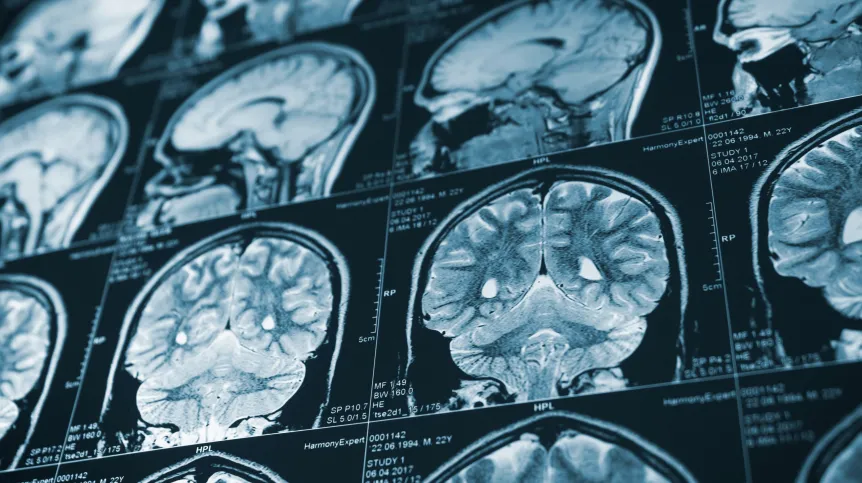
If five risk factors were eliminated from each patient: hypertension, lipid disorders, diabetes, smoking, and overweight or obesity, the risk of heart attack or stroke would decrease by 90 percent, says Professor Krzysztof J. Filipiak, cardiologist.
At the same time, it is also prevention of some cancers, says the expert, who is also an internal medicine specialist, hypertensiologist, clinical pharmacologist, president of the Polish Society for the Advancement of Medicine - Medicine XXI.
PAP: As a cardiologist, do you have a lot of work?
Professor Krzysztof J. Filipiak: Yes, quite a lot, which results from the fact that circulatory system diseases are still the leading cause of death in Poland.
Interestingly, this trend is not changing. There was a time when we thought that, just like in Western European societies, the leading cause of death would be cancer, but a kind of revolution has taken place in the progress of oncology - new drugs have been introduced, thanks to which we are turning many cancer diseases into chronic diseases.
This means that people with a history of cancer will die more and more often from cardiovascular complications - heart attacks and strokes - and not from the underlying disease.
There is also no indication that any group of diseases will overtake us in the coming decades.
PAP: As far as I recall, cardiovascular diseases are responsible for 38% of deaths, while cancer diseases for 24%, so the gap is huge.
K.J.F.: It is true, these numbers are impressive, but remember that these diseases include not only heart attacks, but also strokes. What is more - today, strokes are becoming a bigger problem than heart attacks. We handle heart attacks well, we can treat them well, so we extend the lives of our patients. However, strokes affect people a decade or two later than heart attacks. Therefore, although we have managed to reduce mortality due to heart attacks, we have not had such success with strokes, which result in death or permanent disability and the need for third party care.
PAP: Where do these strokes come from?
K.J.F.: Strokes and heart attacks have exactly the same etiology, the risk factors for their occurrence are identical.
These are hypertension, lipid disorders, diabetes, smoking and overweight/obesity. In the case of ischaemic stroke, there are several other risk factors - including undiagnosed/untreated atrial fibrillation.
If these risk factors were eliminated from every person - which has been confirmed in various epidemiological studies around the world - the risk of heart attack or stroke would be reduced by 90 percent.
PAP: So why do some people have a heart attack and others a stroke?
K.J.F.: To put it simply, ignoring genetic factors, this is because some of these factors have statistically greater importance in the individual decades of a person's life. For example, if you are a young person, lipid disorders, smoking, obesity, classic heart attack risk factors are more important. In older people, hypertension, atrial fibrillation, diabetes are gaining importance among the risk factors, which - if not controlled - will translate into an increased risk of stroke.
However - I will repeat - if we have all these risk factors under control, we prevent both heart attack and stroke.
JAt the same time, this is cancer prevention, because at least two risk factors - smoking and obesity - are also very important risk factors for cancer.
As you can see, by following simple rules, we eliminate the main causes of death in Poland.
PAP: Why is adipose tissue oncogenic?
K.J.F.: Because it is not just a simple fat, but also a very intensively working endocrine gland that secretes various hormones that can modify both the processes of atherogenesis, i.e. lead to atherosclerosis, heart attack and stroke, and affect growth factors (insulin), which leads to easier initiation of carcinogenesis processes, uncontrolled growth of certain cell lines. Both in atherogenesis and in carcinogenesis, chronic inflammation also plays a role, and this is inextricably linked to excess adipose tissue.
PAP: You said that we habdle heart attacks well and patients recover from them basically unscathed or almost unscathed. What should happen, or what we do not know, what we do not do, to enable patients to successfully recover from strokes?
K.J.F.: I have already mentioned risk factor control, so let me remind you that in the case of a stroke there is another additional factor that is not essential for the causes of a heart attack, namely a specific heart rhythm disorder called atrial fibrillation. Many ischaemic strokes are caused by it, especially if it has not been diagnosed and treated.
However, if atrial fibrillation is diagnosed earlier (and it often occurs without symptoms) and anticoagulants are administered regularly, the patient will not suffer an ischaemic stroke.
I am very glad that devices referred to as 'health self-management' are being used in the broadly understood prevention. These include, for example, smartwatches that can measure the heart rate, are able to interpret even short, single-channel ECG recordings from the fingertip, and alert 'hey, you have atrial fibrillation'. Such a patient will go to the doctor more quickly to confirm or deny such a diagnosis using professional tests.
In the future, common use of such devices may also contribute to reducing the frequency of strokes.
PAP: That is great, but I am more interested in why doctors are able to get patients back on their feet after a heart attack, while those after strokes leave hospitals more or less disabled.
K.J.F.: I am a cardiologist and I must emphasise once again that Poland is a country where we have fantastically organized invasive cardiology. When it comes to the organization of invasive cardiology, we have one of the best networks of haemodynamic laboratories in Europe and we can quickly transport a patient to an invasive cardiology laboratory anywhere in Poland, open the vessel and treat the infarction causally. In fact, patients very often come out of it unscathed or with only minor heart failure.
In the case of ischaemic stroke, we could also think about a better prognosis for the patient if we had a network of similar 24-hour centres where procedures would be performed in fresh strokes, but I would prefer to leave the topic of this optimal organization of stroke treatment to my neurologist colleagues.
Currently, the centres that participate in the invasive stroke treatment programme are certainly inadequate to the scale of stroke occurrence, and the neurological community in Poland itself has not yet educated an adequate number of invasive neurologists.
I would put forward a somewhat paternalistic proposition that neurology is repeating the paths of cardiology, only with a 30- or 40-year delay. We used to treat heart attacks with lying in bed. Later, we had an incredible breakthrough, because thrombolytic drugs came into use, or, as I sometimes explain to students, drugs that are a kind of pharmacological 'moles' administered to the vessels to dissolve the clot on the ruptured plaque. However, cardiology has already left that era behind, because invasive cardiology has replaced thrombolytic treatment in fresh heart attacks. And neurology has relatively recently entered the phase of thrombolytic treatment, and the decade of invasive treatment - on a national scale - is only just beginning.
PAP: You place a lot of emphasis on prevention, so I would like to ask about those fields of medicine that are neglected by our system, namely dentistry and gynaecology. The former in particular has been de facto privatised, and it is known that various diseases, including cardiological ones, can start from untreated teeth.
K.J.F.: Despite everything, I would not compare dentistry with gynaecology, because while I agree with the view concerning the actual privatisation of dental services, when it comes to gynaecology I would like to note that most women still use the services of gynaecologists within the National Health Fund, and almost all give birth in hospitals with contracts with the National Health Fund.
Modern gynaecology, new procedures, new surgical methods are developed in academic centres, they are not privatised.
However, when it comes to dental treatment, I would agree that at the beginning of the systemic transformation at the end of the last century, dentistry was considered a field of medicine that could be privatised to save on medical services. I say this with regret, because dental diseases, especially periodontal diseases, i.e. those related to the mucous membrane and periodontium, lead to cardiological, neurological, and even ophthalmological complications, because these complications are related to the inflammatory process.
I once listened to experts discussing what went wrong in the Polish health transformation - they emphasised that it was not so much the privatisation of dentistry itself, but rather removing dental prevention from schools. I am still from the generation where there was a dentist in every school. It is good that health education, which also includes oral hygiene, has been included in the health education curriculum, but it is a pity that it is an optional subject, because it should be mandatory.
Investment in prevention and prophylaxis is always very beneficial for the state, also in terms of spending on health care, but this benefit only appears after a decade or two. I think that this is our main problem - that politicians, regardless of the political option currently in power, are not interested in investing money in something that will bring benefits with such delay. They think in terms of their political term and the next elections.
Interview by Mira Suchodolska (PAP)
mir/ jann/ mhr/













